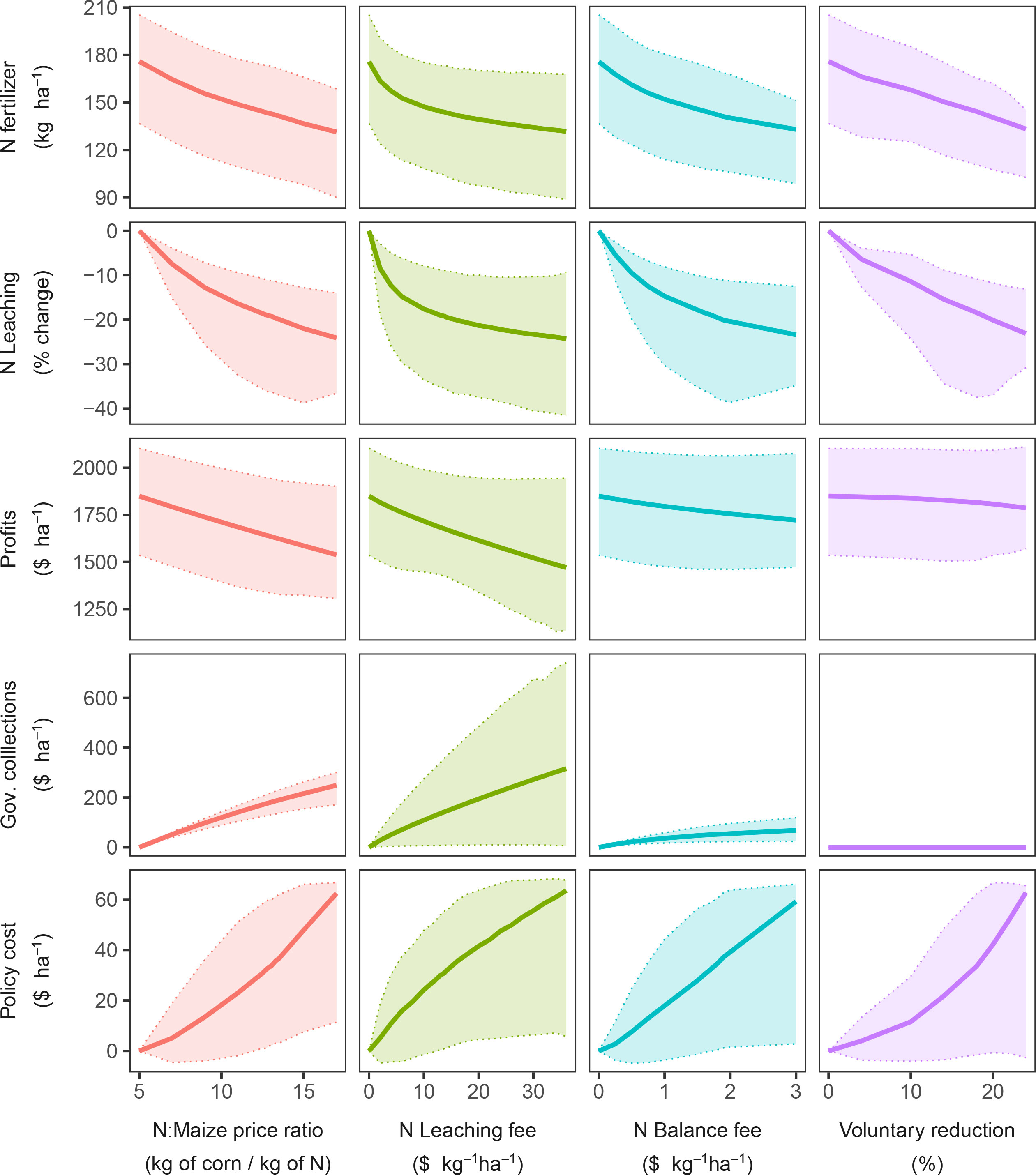- 1Department of Crop Sciences, University of Illinois at Urbana-Champaign, Champaign, IL, United States
- 2Department of Plant Sciences, University of California, Davis, Davis, CA, United States
- 3Department of Agronomy, Iowa State University, Ames, IA, United States
- 4Department of Environmental Studies, New York University, New York, NY, United States
A corrigendum on
Exploring trade-offs between profit, yield, and the environmental footprint of potential nitrogen fertilizer regulations in the US Midwest
by Mandrini G, Pittelkow CM, Archontoulis S, Kanter D and Martin NF (2022). . 13:852116. doi: 10.3389/fpls.2022.852116
In the original article, there was an error in the units for the price ratio policy. They were inverted, being kg corn/kg N, instead of kg N/kg corn. The error was repeated throughout the article in equations, text, and figures. We are correcting the mistake, but it did not affect the conclusions.
The original footnote text was:
“Each policy is at the sub-level that allowed to obtain a state-wise reduction in leaching of 20%. Indicators’ values are the average across all fields and years.
(a) kg N/kg corn. (b) $ Nkg-1 ha-1. (c) $ N kg-1 ha-1. (d) %.”
The corrected footnote text appears below.
“Each policy is at the sub-level that allowed to obtain a state-wise reduction in leaching of 20%. Indicators’ values are the average across all fields and years.
(a) kg corn/kg N. (b) $ Nkg-1 ha-1. (c) $ N kg-1 ha-1. (d) %.”
There was also an error in Figure 2 as published. The units for the price ratio policy are inverted.

Figure 2 Trajectory of N fertilizer use, N leaching, Farm profits, government collections, and policy cost for the four policies. Solid line shows the mean. The shaded area indicates the 10 and 90% quantiles across fields (averaged across years).
These units have also been corrected in the following sections: Methods, Stage 2: Optimization Module, Policy Scenarios, N:maize price ratio modification, equation 1, Methods, Stage 2: Optimization Module, Policy Scenarios, N:maize price ratio modification, paragraph 3, Results, Regional and Field-Level Effects at a 20% N Leaching Reduction, paragraph 2.
The units previously stated:
“kg N/kg maize”
The corrected units appear below:
“kg maize/kg N”
There were formatting errors in the supplementary material. The supplementary material file in the original article has been updated. The authors apologize for these errors and state that this does not change the scientific conclusions of the article in any way. The original article has been updated.
Publisher’s note
All claims expressed in this article are solely those of the authors and do not necessarily represent those of their affiliated organizations, or those of the publisher, the editors and the reviewers. Any product that may be evaluated in this article, or claim that may be made by its manufacturer, is not guaranteed or endorsed by the publisher.
Keywords: environmental policy, bio-economic modeling, externalities, nitrogen pollution, nitrogen use efficiency
Citation: Mandrini G, Pittelkow CM, Archontoulis S, Kanter D and Martin NF (2023) Corrigendum: Exploring trade-offs between profit, yield, and the environmental footprint of potential nitrogen fertilizer regulations in the US Midwest. Front. Plant Sci. 13:1100580. doi: 10.3389/fpls.2022.1100580
Received: 16 November 2022; Accepted: 21 November 2022;
Published: 10 January 2023.
Approved by:
Frontiers Editorial Office, Frontiers Media SA, SwitzerlandCopyright © 2023 Mandrini, Pittelkow, Archontoulis, Kanter and Martin. This is an open-access article distributed under the terms of the Creative Commons Attribution License (CC BY). The use, distribution or reproduction in other forums is permitted, provided the original author(s) and the copyright owner(s) are credited and that the original publication in this journal is cited, in accordance with accepted academic practice. No use, distribution or reproduction is permitted which does not comply with these terms.
*Correspondence: German Mandrini, Z2VybWFubTJAaWxsaW5vaXMuZWR1
 German Mandrini
German Mandrini Cameron Mark Pittelkow
Cameron Mark Pittelkow Sotirios Archontoulis
Sotirios Archontoulis David Kanter
David Kanter Nicolas F. Martin
Nicolas F. Martin